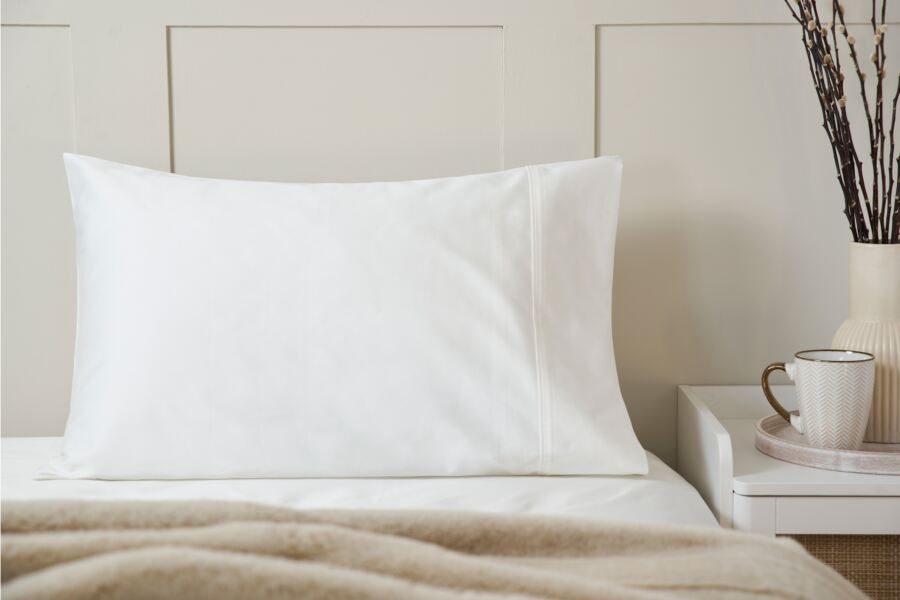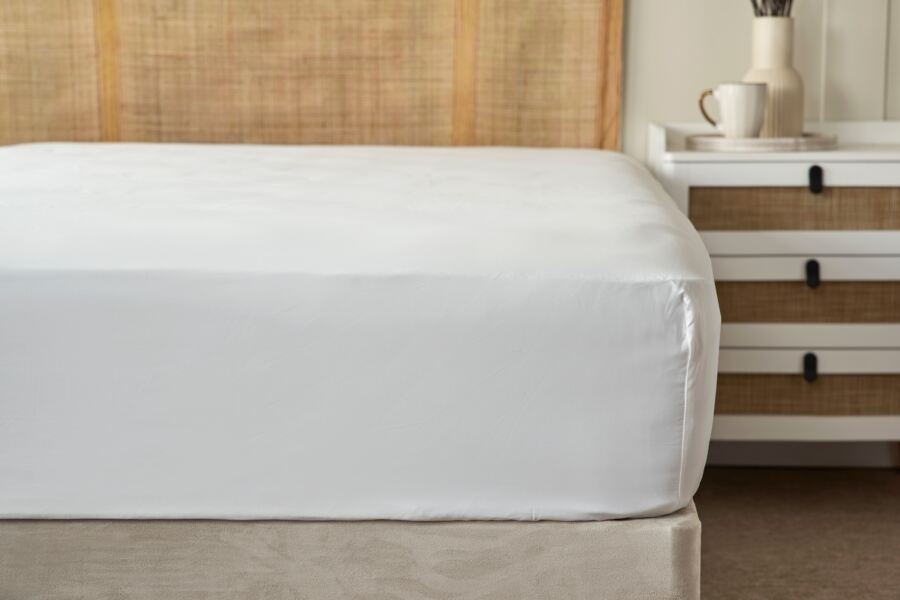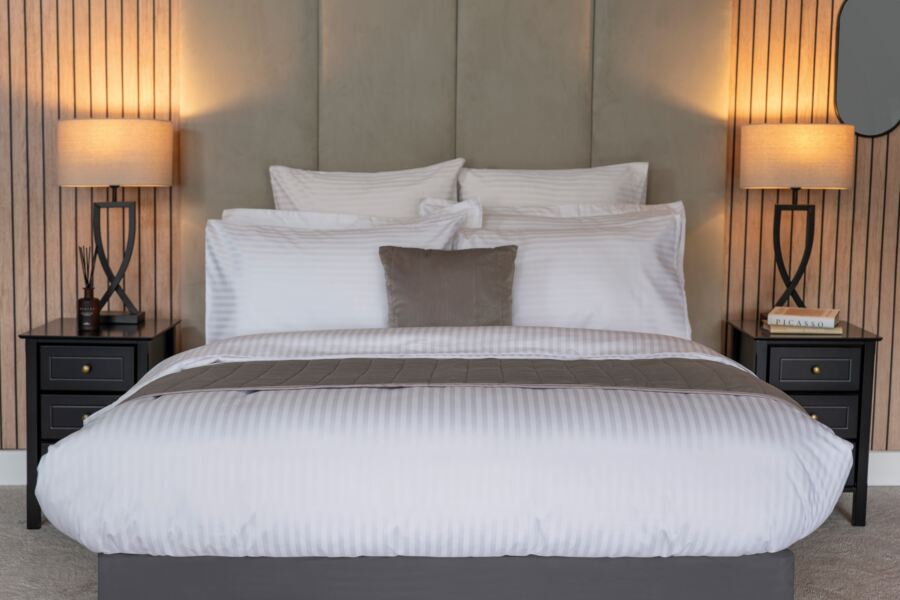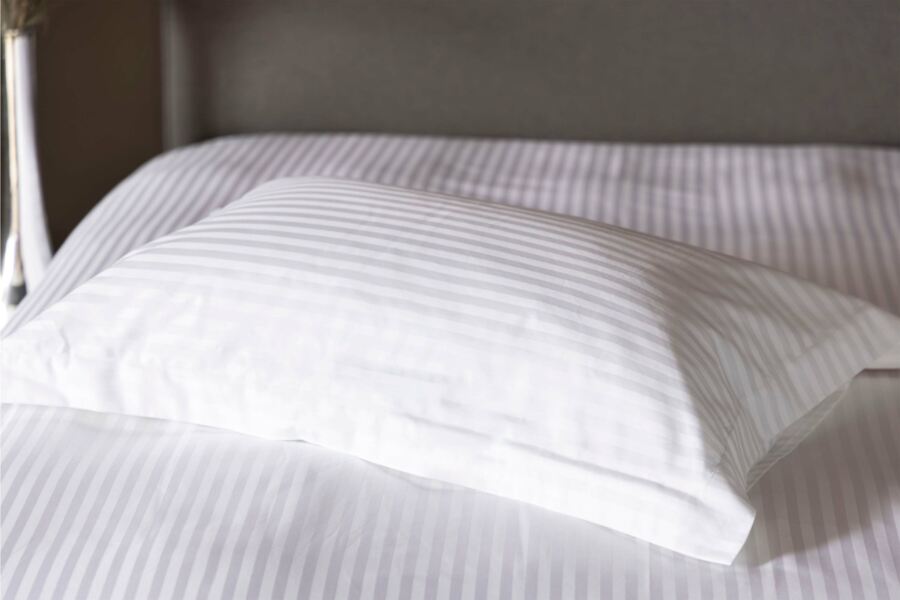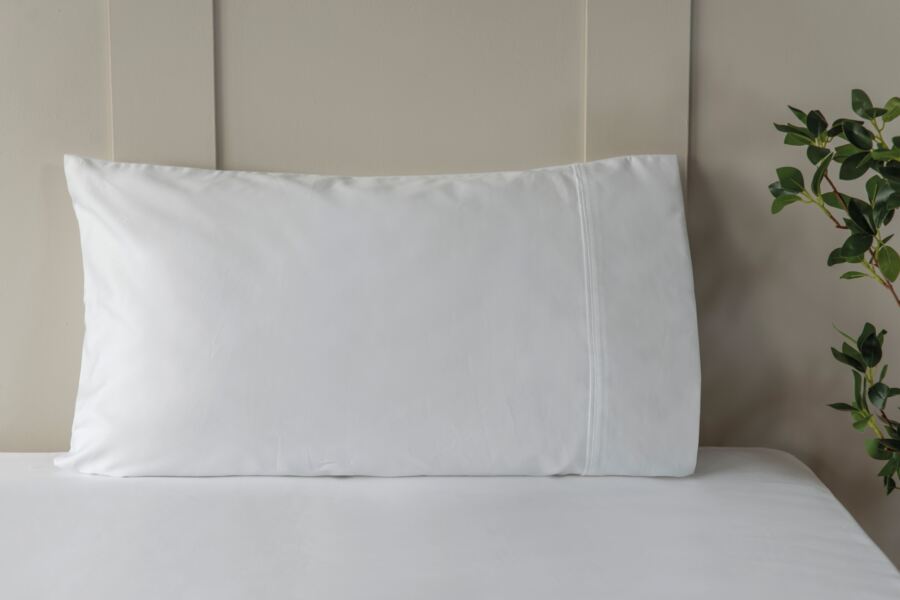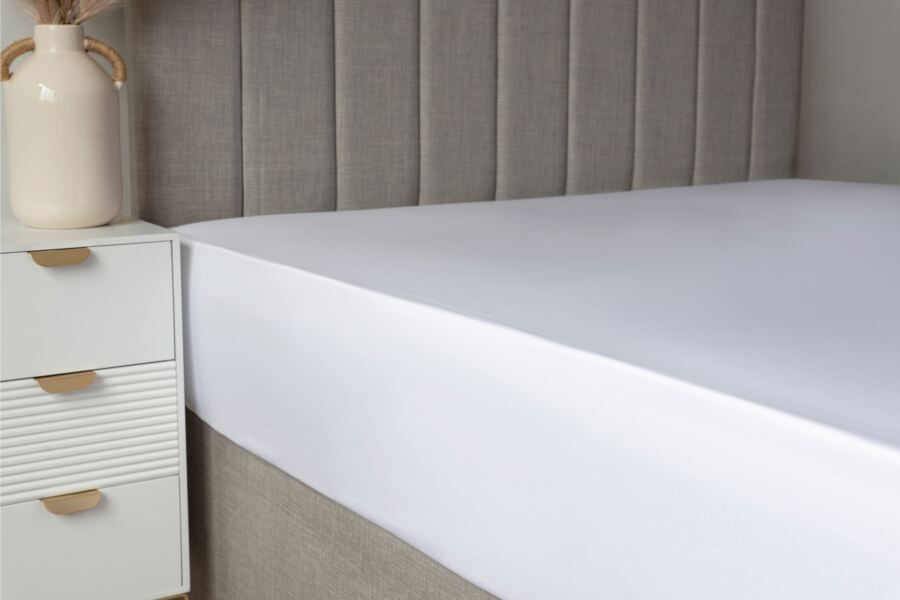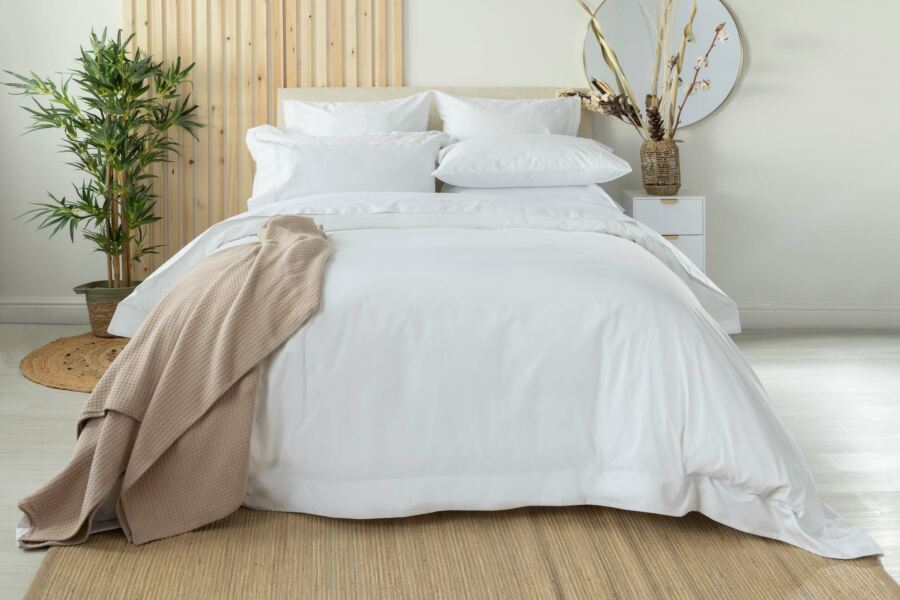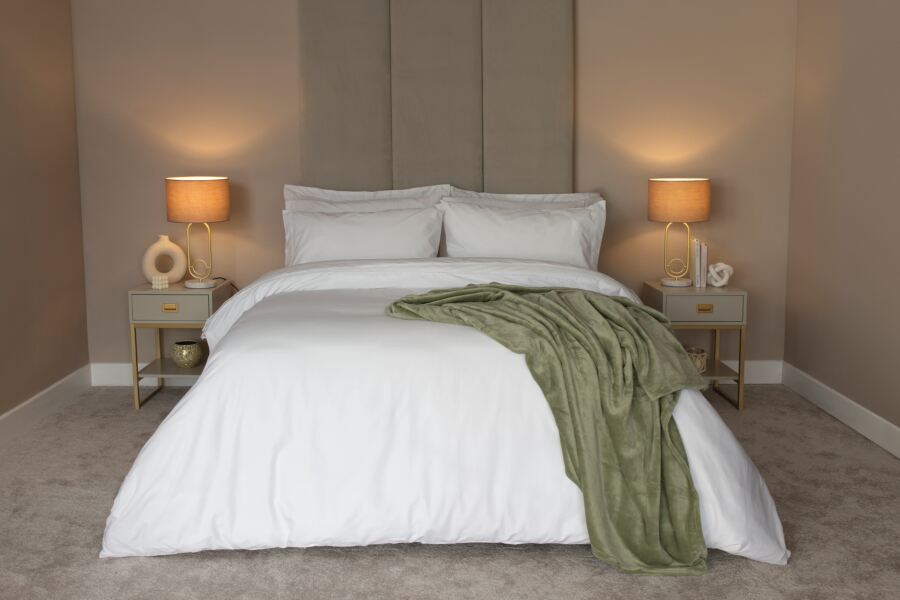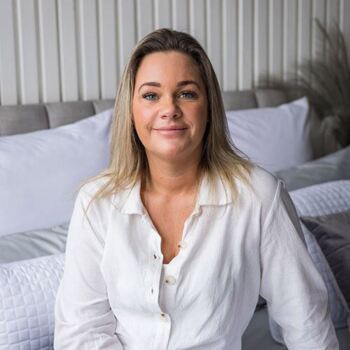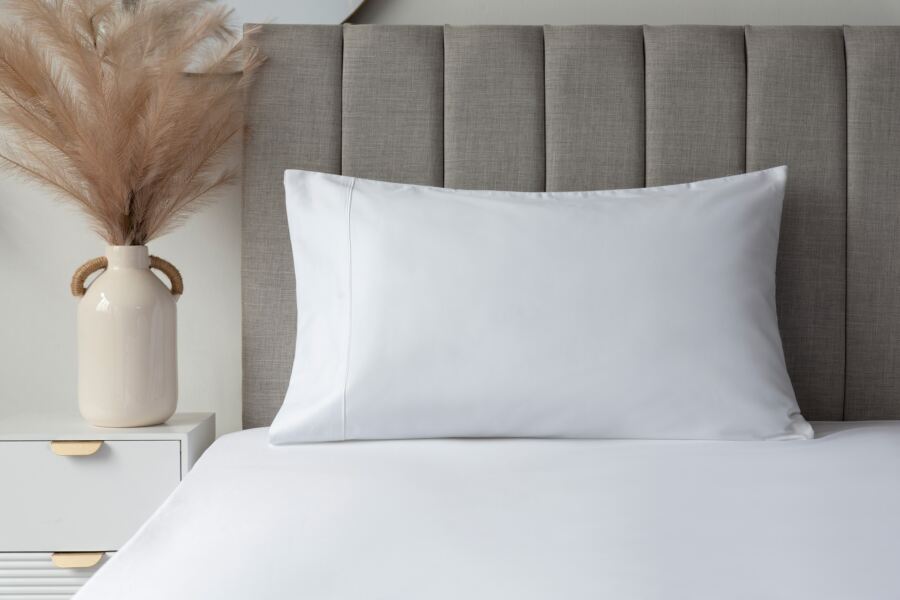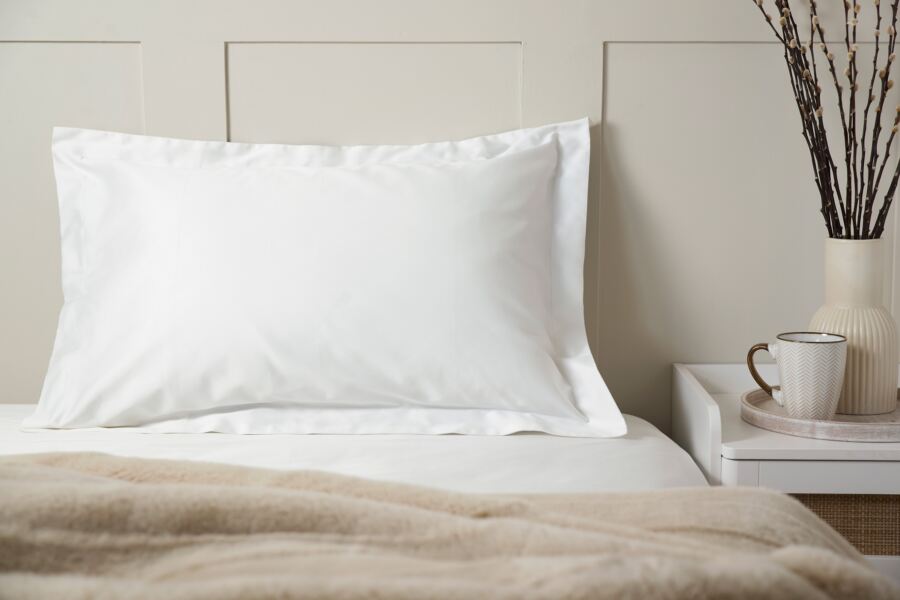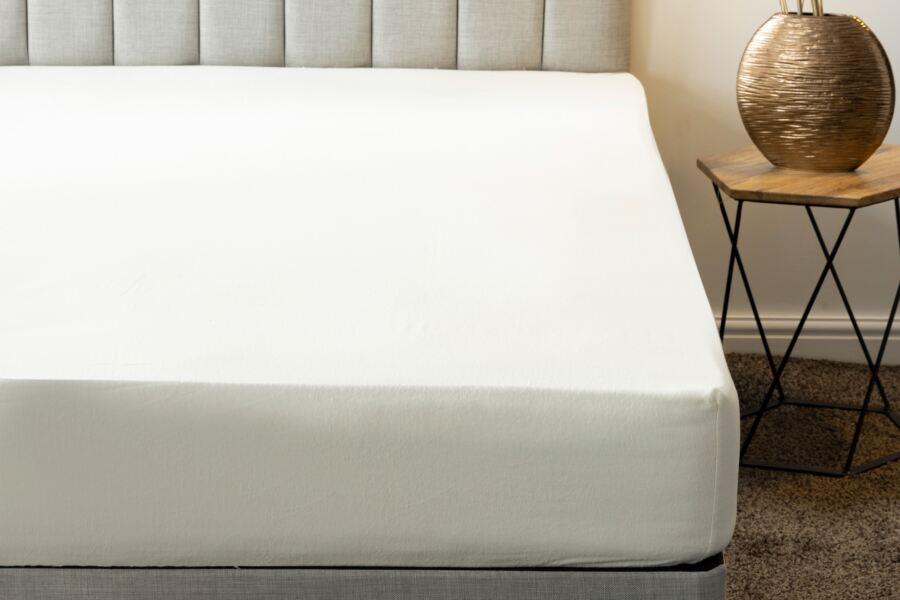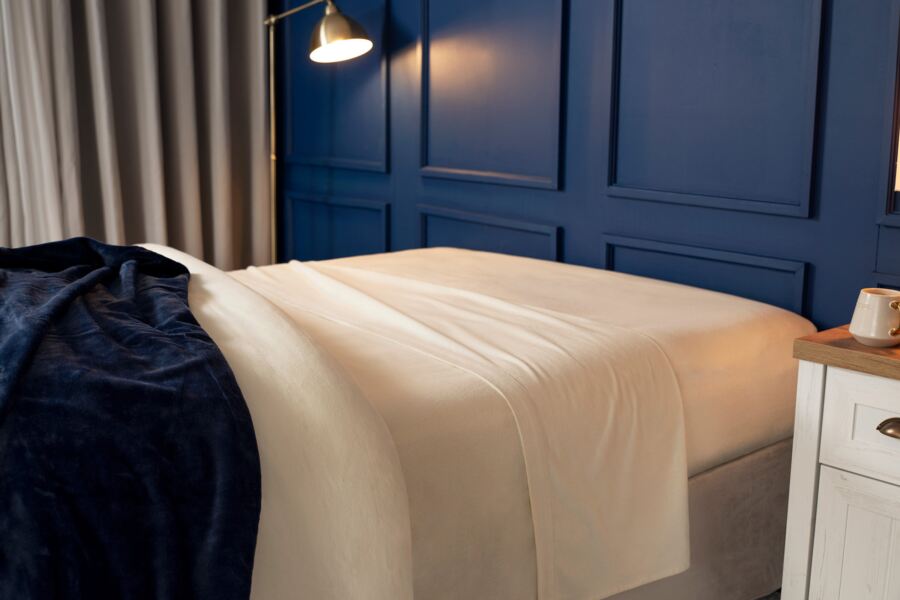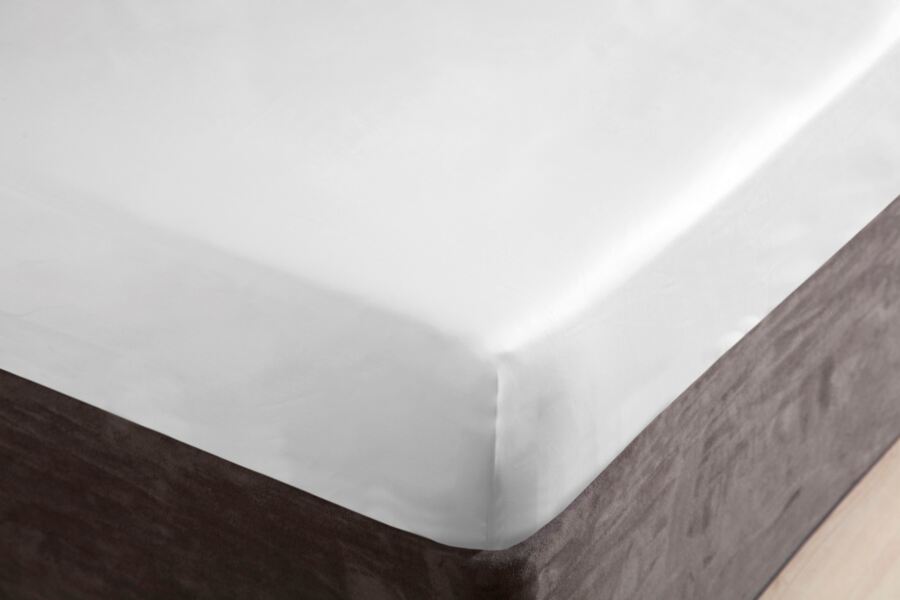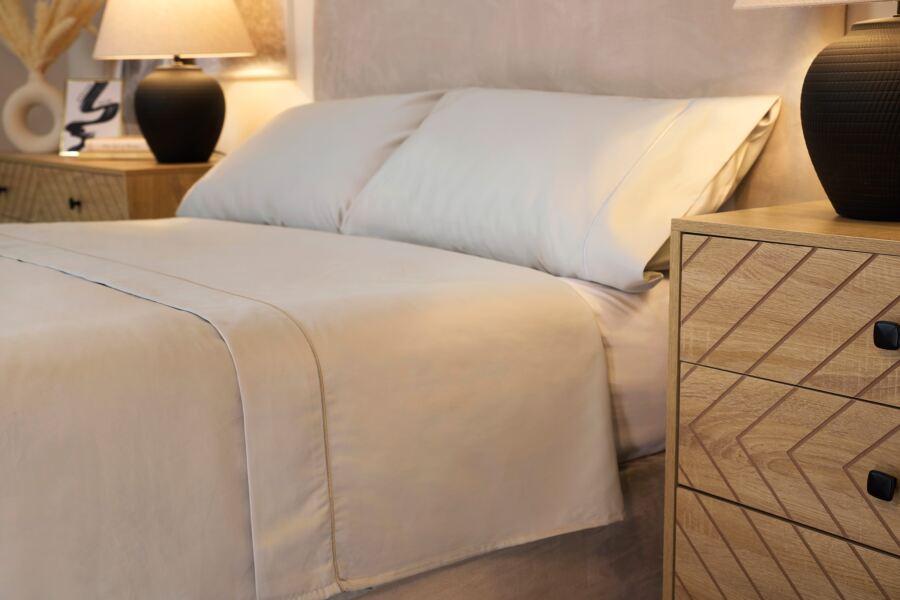Table of Contents
Types of Cotton
The type of cotton you choose for your bed linen affects its feel, durability, and cost. Different varieties offer unique qualities, from softness to strength, directly influencing your sleep comfort.
Let’s explore the different types of cotton bed linen to help you pick the best option for your bedding.
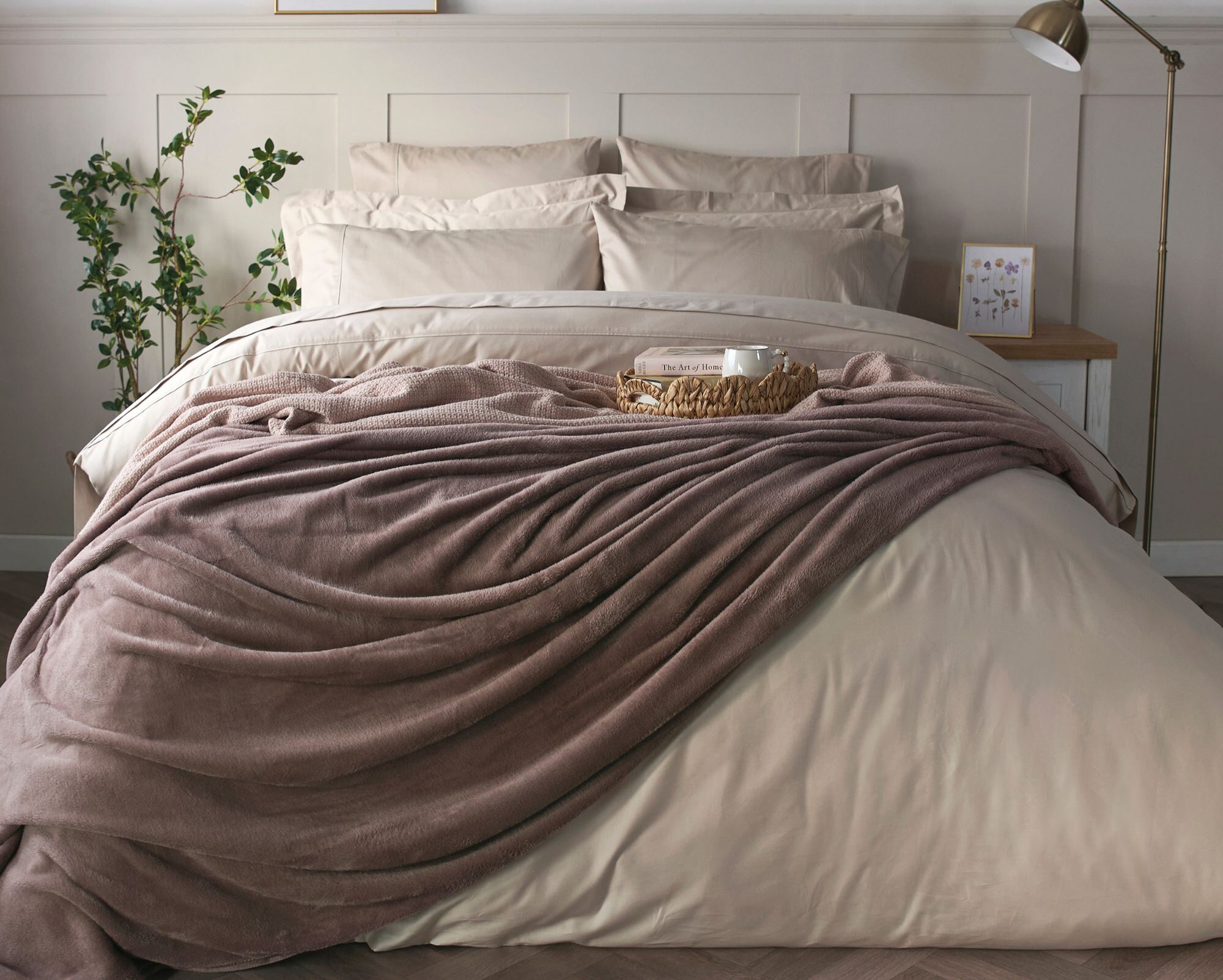
Egyptian cotton
Grown on the banks of the Nile River, Egyptian cotton is considered a top-tier option. The plant's long fibres produce a finer, stronger yarn, which results in incredibly soft and durable bedding.
Egyptian cotton is praised for being breathable, resistant to pilling, and becoming softer with every wash. It's no wonder that this luxury fabric is a popular choice among those looking to invest in premium bed sheets and duvet covers.
Pima cotton
Pima cotton is mostly grown in Peru and the United States. While it isn't quite as luxurious as Egyptian cotton, it still offers a soft and silky feel thanks to its extra-long staple fibres.
Additionally, this fabric boasts excellent durability thanks to its resistance to pilling, stretching, and tearing. In fact, it's known to last longer than all other types of cotton.
The best news? All these benefits come with a more accessible price point, making Pima cotton an ideal option for those looking to strike a balance between performance, softness, and value.
American Upland cotton
American Upland cotton is the most common cotton in the world, often used for clothing, home textiles, and other everyday products.
Since the plant has shorter fibres than Egyptian or Pima cotton, the fabric doesn't feel as smooth and typically has a shorter lifespan. However, thanks to modern production methods, you can still expect comfortable sheets of a decent quality, perfect for those on a tighter budget.
Sea Island cotton
Sea Island cotton is one of the rarest and most luxurious cotton types in the world, known for its incredible softness, natural sheen, and durability.
Grown in limited quantities in the West Indies, it features extra-long staple fibres that produce exceptionally smooth threads. It’s breathable, hypoallergenic, and retains its softness after washing, making it ideal for those who value long-term comfort.
Due to its limited production and premium quality, Sea Island cotton is more expensive and less widely available than Egyptian or Pima cotton.
Types of Weaves
The weave refers to how the cotton fibres have been interlaced to create a pattern. This pattern affects various aspects of the fabric, including the look, feel, texture, and breathability.
Let's take a look at some of the most common weaves found in cotton bed sheets.
Flannel
Flannel sheets are made from loosely woven cotton that’s brushed to create a warm, fuzzy finish. This technique is also used to produce winter clothing items like scarves and beanies. Ideal for those who live in colder climates, flannel is known for its cosy feel and ability to retain body heat.
This fabric is often measured by weight (in grams or ounces per square metre) rather than thread count. The heavier the flannel sheets, the warmer you can expect them to be.
Percale
One of the most common and popular options available, Percale is a tight weave that produces a crisp, matte finish, ideal for everyday use. Percale is similar to a "plain" weave, but it's woven at a higher thread count, resulting in a softer feel.
Known for its lightweight breathability, this weave suits warm sleepers and those living in hot climates, offering a cool, fresh feel that softens with each wash.
Sateen
Sateen weave uses more threads on the surface, giving the fabric a silky sheen and buttery finish.
It’s thicker and slightly heavier than percale, making it better for cooler nights and colder climates. The drape and sheen offered by sateen make it a popular fabric for dresses, skirts, and other clothing items.
While Sateen bed sheets are smooth and luxurious, they're not as breathable as Percale or Egyptian, making them unsuitable for hot sleepers.
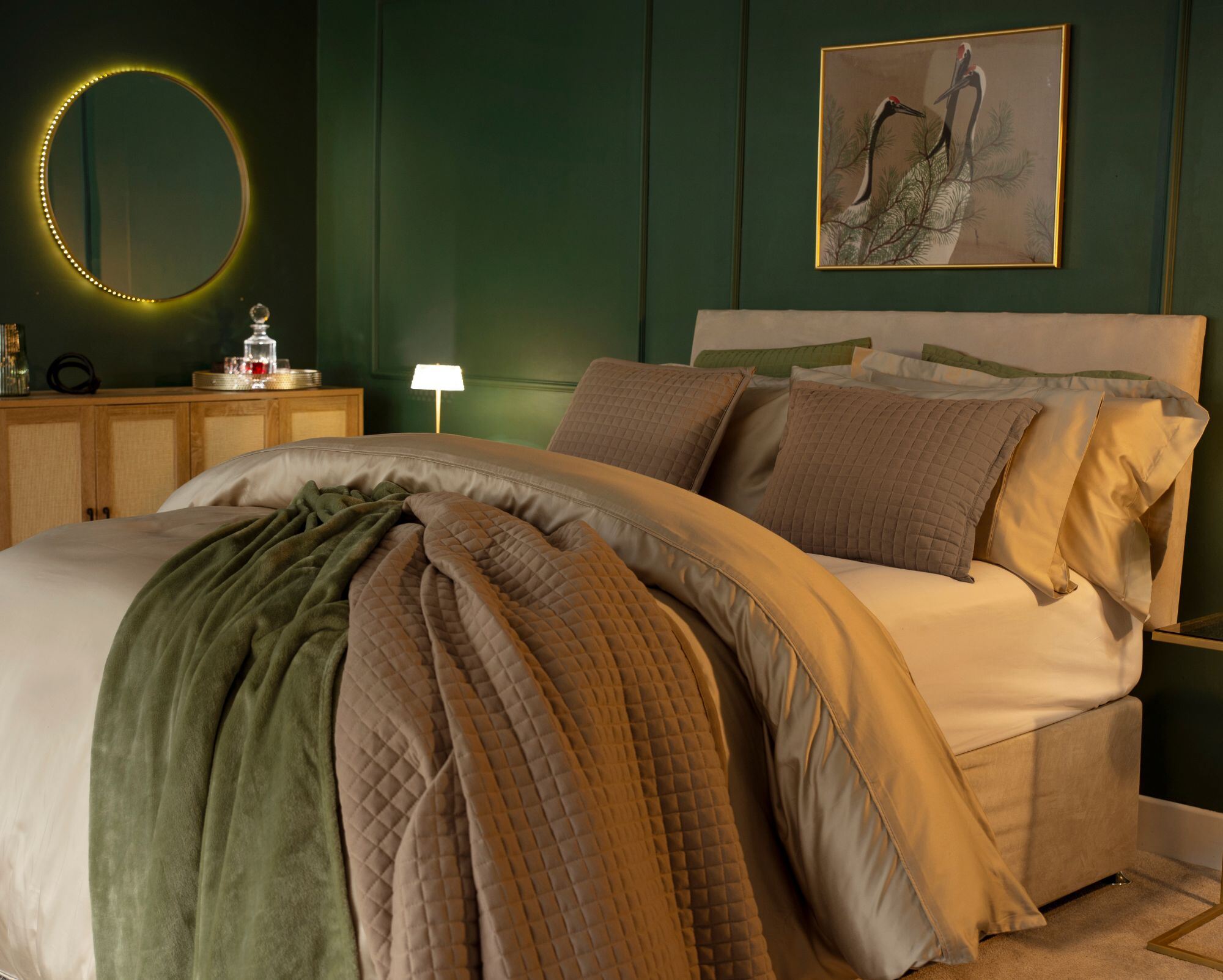
Twill
Twill is a diagonal weave pattern, characterised by its slanted lines and soft drape. It’s commonly used in denim and upholstery, but also features in some bed linens.
Cotton twill sheets are durable and resistant to wrinkles, with a heavier feel than percale but less sheen than sateen. The weave structure makes twill less prone to showing dirt and creases, which can be a bonus for busy households.
Twill sheets tend to feel smooth and slightly textured at the same time, offering a cosy, lived-in feel right out of the package. Sturdy, breathable, and low-maintenance, they’re great for cooler seasons or those who prefer a bit of weight in their bedding.
Thread Count
Thread count refers to the number of threads per square inch of fabric. While higher thread counts are often used as a selling point, it's a good idea to understand the specific advantages before making your decision.
Let's explore low, medium, and high thread counts so you can gain a deeper insight into each option.
Low (Under 200)
Sheets with a thread count under 200 are typically lightweight and breathable, making them a great choice for anyone who tends to sweat in their sleep. However, these sheets may not feel as smooth as those with higher thread counts.
Low thread counts are ideal for warmer climates or people who prefer crisp, no-fuss bedding. Some budget cotton sheets fall into this range (since fewer threads are required to make them), as do many flannels (where weight matters more than count).
Medium (200 to 400)
This range is often considered the sweet spot for most cotton bed linen. Thread counts that range between 200 and 400 usually offer a great balance of softness, breathability, and durability.
Many high-quality percale and sateen sheets fall into this category, making it a great choice for everyday use. If you are new to bed sheet materials and thread counts, you'll be safe buying sheets with a medium thread count.
High (400-600)
Sheets with a higher thread count often feel denser and more luxurious, particularly if made from long-staple cotton. You can expect to enjoy a silky soft finish as you drift off to dreamland at the end of a busy day.
These sheets tend to be more insulating than those with medium thread counts, making them a great choice for cooler sleepers or those who want a more substantial sheet. Just be sure they’re made from high-quality cotton, as lower-grade fibres can be packed into high thread counts without delivering true softness.
Extra High (600 plus)
Extra high thread counts can feel indulgent, with a heavy, silky finish that appeals to those who love ultra-smooth bedding.
However, beyond 800, thread count can become more of a marketing tactic than a practical feature. It’s the quality of the cotton and weave that matters more than a super high number.
Keep in mind that high thread counts are usually not very breathable, which can make you feel hot and stuffy, especially in warmer climates.
FAQs
What is the best type of cotton for bed sheets?
Egyptian cotton is widely considered the "best" type of cotton for bed sheets, thanks to its long fibres, soft feel, and durability. However, Pima cotton is another popular option, as it offers a luxurious feel while still being affordable.
What type of cotton is the softest?
Cotton made from extra-long staple fibres, such as Egyptian and Pima cotton, is typically the softest. These fine threads are known for producing smooth yarns, which result in luxury fabrics that soften with age.
Besides cotton, what other fabrics are used in quality bed linen?
Popular alternatives include bamboo-derived materials, linen (made from the flax plant), and synthetic blends. Each fabric offers its own set of pros and cons, so it's best to do a bit of research to determine which option is best suited to your preferences.
Which type of cotton bed sheets are the most affordable?
While they aren't as smooth as Pima or Egyptian cotton, American Upland cotton sheets tend to be the most affordable. If you're on a strict budget, you may want to opt for a polycotton blend as this material is significantly cheaper than 100% cotton.
What is brushed cotton?
Brushed cotton is a type of cotton fabric that has been gently combed to raise the fibres. This creates a velvety soft feel, which offers extra warmth and cosiness. Brushed cotton is often used in flannel sheets and is an ideal option for those who live in colder climates.

